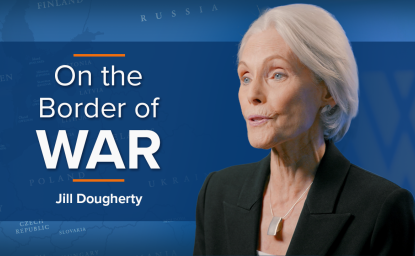Gridlocked: Scholar Studies U.S. Energy Regulation
Scholar Peter Behr urges study on the electric power grid's reliability in the wake of the recent California and Northeast energy crises.
Scholar Peter Behr urges study on the electric power grid's reliability in the wake of the recent California and Northeast energy crises.
In the United States, the battle has continued for nearly a century over how the nation's indispensable electric power grid should be regulated. In the latest chapter, two profound shocks have halted the move toward competitive electric markets: the 2000-'01 California energy shortage and the 2003 Northeast power blackout.
These events reveal vulnerabilities in the grid's operation that policymakers have failed to remedy, said journalist Peter Behr, currently a Wilson Center public policy scholar, who has written about and studied U.S. energy for years.
Over the past decade, the government has promoted deregulation policies to spur competition among power providers and offer consumers direct access to retail power under the premise that markets would provide the most cost-effective access to electricity. But only 18 states and the District of Columbia are proceeding with some form of deregulated retail electric service. Following the California-West Coast debacle, six other states have halted deregulation and the remaining 26 states are not considering it.
"The California deregulation plan was woefully designed and invited manipulation," said Behr. "Power companies that had everything to gain by deregulation sabotaged the market."
Three years later, the Northeast blackout highlighted weaknesses in grid oversight, where responsibility is split among federal and state governments and industry groups.
These challenges confront one of the century's remarkable engineering achievements: 200,000 miles of high-voltage power lines linking 5,000 power plants with 283 million customers. The power grid is divided into three sections: the East and West separated by the Rocky Mountains, and Texas. Power from plants must be synchronized to flow where it is needed.
"It's as if all the symphony orchestras across the continent had to play the same piece at the same time in the same pitch," said Behr.
But while the grid is used more heavily every day, investments to strengthen the network have stagnated. "Why would a company invest in its part of the grid if its competitors would gain an advantage?" said Behr. "It is unclear how those investments would be repaid." Meanwhile, Congress has failed to enact energy legislation, leaving the grid without mandatory rules governing operations.
Highlighting the history of public-private contention over energy, Behr outlined the political and financial development of the power grid from the time it emerged in the early 20th century, when technology allowed power companies to transmit across state lines. The industry's expansion in the 1920s ended disastrously by the end of the decade, as large utility holding companies went bankrupt during the Great Depression.
President Roosevelt and his New Deal policies challenged the dominance of the utility industry, attempting to break up the holding companies and exert greater governmental authority over power. He created the Tennessee Valley Authority (TVA) and authorized the building of major hydroelectric dams in an effort to promote public power. But utilities remained dominant throughout the post-war period and have withstood the challenge of deregulation begun in the 1990s.
The current policy stalemate calls for study on the grid's reliability, said Behr. "We must pay attention to this energy resource, how it works, the risks we face."
Behr had worked for The Washington Post for 23 years as business editor, reporter, and columnist, before retiring this January and beginning research for a book on the power grid.


